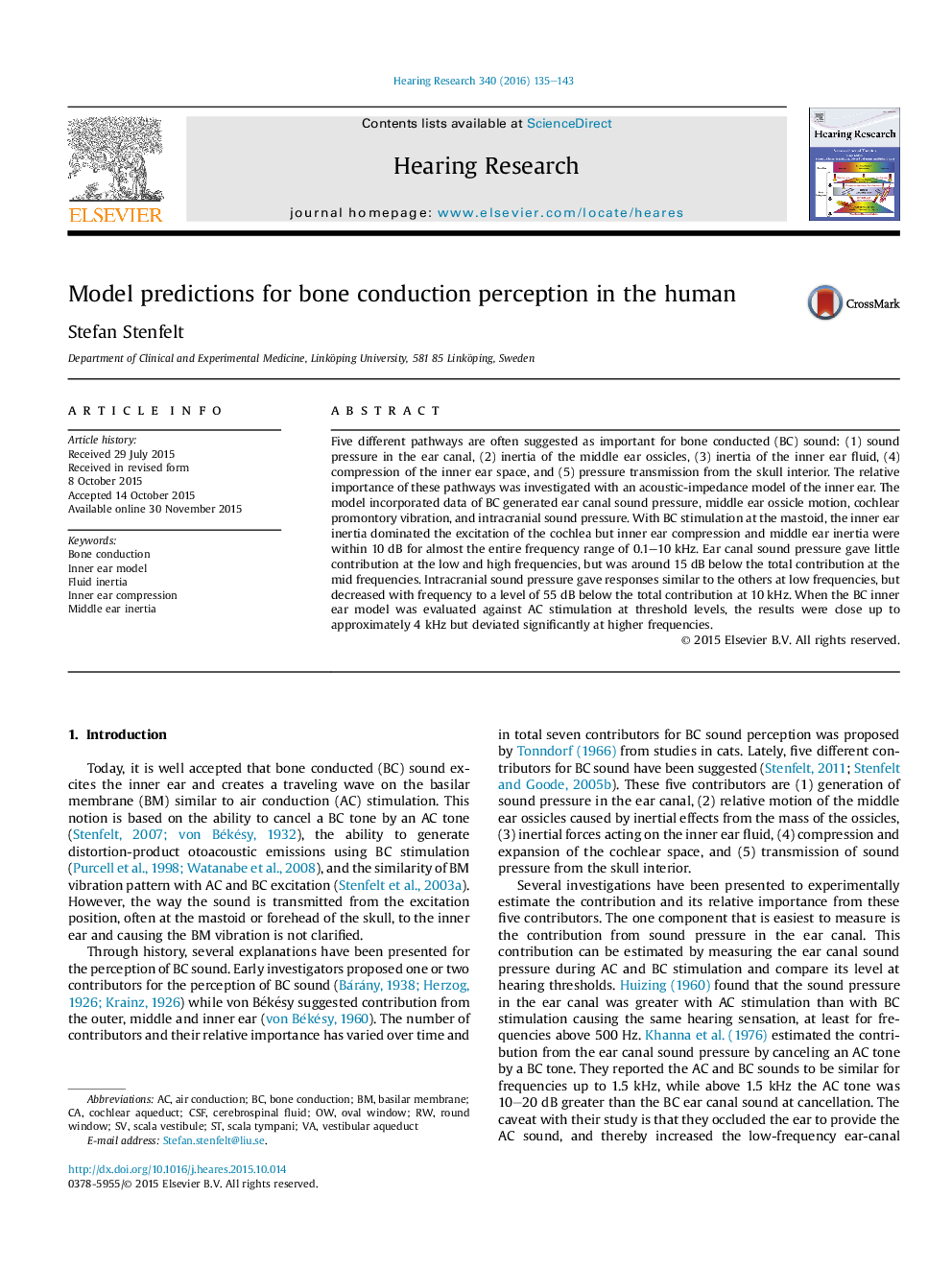| Article ID | Journal | Published Year | Pages | File Type |
|---|---|---|---|---|
| 6286912 | Hearing Research | 2016 | 9 Pages |
â¢A model for BC simulates the contribution from 5 components.â¢The inner ear compression, inner ear inertia and middle ear inertia are most important.â¢The contribution from intracranial sound pressure is insignificant at higher frequencies.â¢The model provides similar BM excitation for AC and BC threshold stimulation up to 4 kHz.
Five different pathways are often suggested as important for bone conducted (BC) sound: (1) sound pressure in the ear canal, (2) inertia of the middle ear ossicles, (3) inertia of the inner ear fluid, (4) compression of the inner ear space, and (5) pressure transmission from the skull interior. The relative importance of these pathways was investigated with an acoustic-impedance model of the inner ear. The model incorporated data of BC generated ear canal sound pressure, middle ear ossicle motion, cochlear promontory vibration, and intracranial sound pressure. With BC stimulation at the mastoid, the inner ear inertia dominated the excitation of the cochlea but inner ear compression and middle ear inertia were within 10Â dB for almost the entire frequency range of 0.1-10Â kHz. Ear canal sound pressure gave little contribution at the low and high frequencies, but was around 15Â dB below the total contribution at the mid frequencies. Intracranial sound pressure gave responses similar to the others at low frequencies, but decreased with frequency to a level of 55Â dB below the total contribution at 10Â kHz. When the BC inner ear model was evaluated against AC stimulation at threshold levels, the results were close up to approximately 4Â kHz but deviated significantly at higher frequencies.
